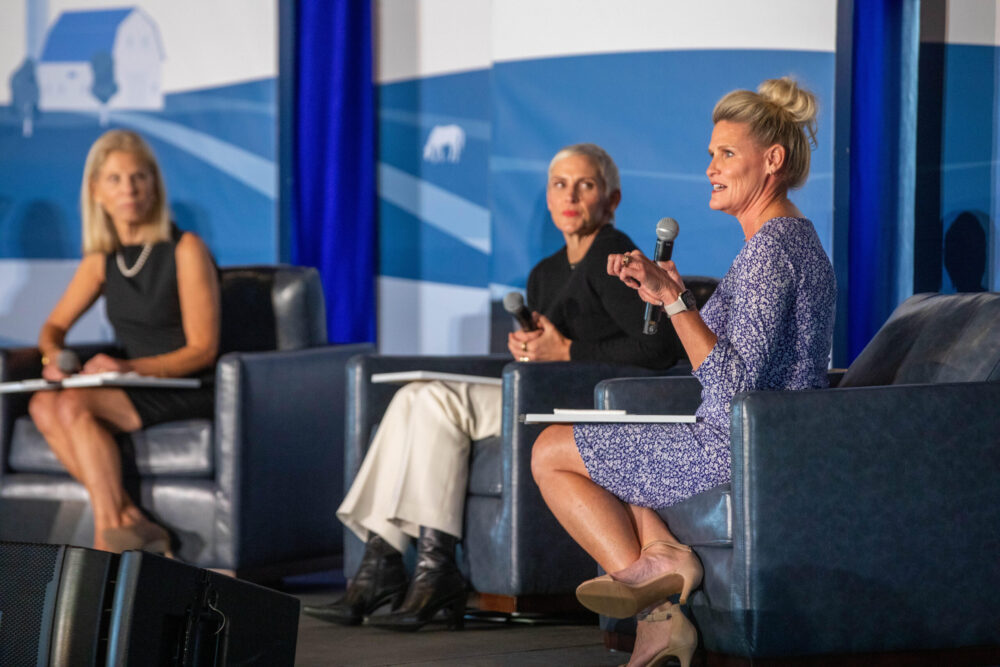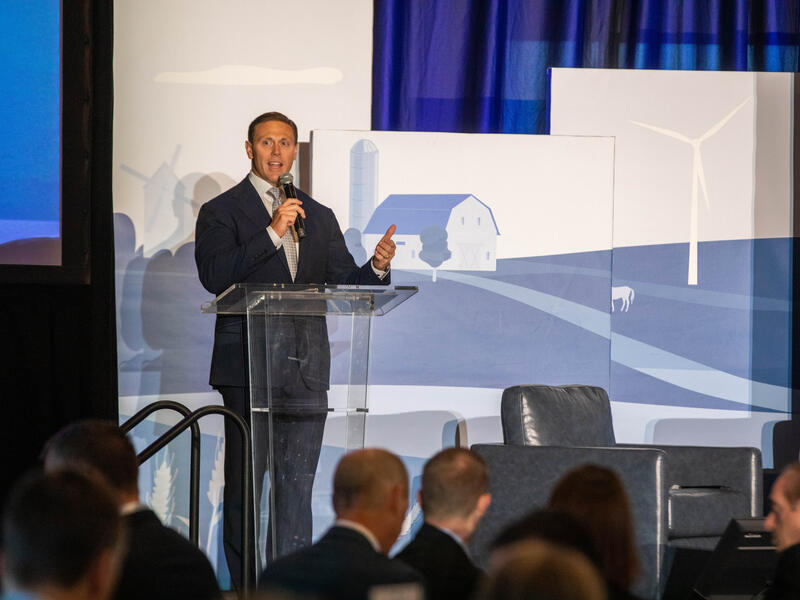The health of rural America is taking center stage thanks to the Summit on the Future of Rural Health Care hosted by Sanford Health in Sioux Falls, South Dakota.
Industry leaders, health care advocates and national policymakers descended on the Sanford Barn for exciting discussions surrounding workforce challenges and solutions at the second annual day-long summit.
Bill Gassen, president and CEO of Sanford Health, kicked off the event by making a pledge to people living in rural communities.
“We are going to guarantee that their ZIP codes will not limit the level of care that they receive,” Gassen said. “We believe that the 20% of the United States that lives in rural America deserves the same access to world-class care.”
A Time magazine report adds 60% of health outcomes are determined by a person’s ZIP code.
Shortages of health care providers in rural areas can worsen rural health disparities, according to the National Rural Health Association.
“The key risk to us achieving those aspirational targets for this next year really will rise and fall on our workforce,” Gassen said regarding physicians, nursing staff and more. “Those incredible caregivers and those who support our caregivers. We need to make sure we not only retain them but we think about how do we continue that pipeline into the future.”
There were 200 people who attended the summit in person and more than 2,300 joined the event via livestream, including national media.
The full video recording of the second Summit on the Future of Rural Health Care is available online.

Photo by Jay Pickthorn, Sanford Health
Reinventing America’s health care workforce
Summit panelists and moderators from across the country tackled the workforce topic while representing organizations such as the American Medical Association, Microsoft, Centers for Medicare and Medicaid Services (CMS), Commonwealth Fund, American Health Care Association and Bassett Healthcare Network — among others.
“You can’t solve the workforce problem, you just cannot address it, by throwing more people at it,” Ezekiel Emanuel, M.D., said during the first session.
Dr. Emanuel, an oncologist and University of Pennsylvania leader, and others stressed using tools such as AI will become essential moving forward.
“The history of automation has not been stealing jobs it turns out. It’s making people more productive, augmenting what we can do,” Dr. Emanuel said.
Nearly 25% fewer rural physicians will be practicing by 2030, the Association of American Medical Colleges says.
That’s in addition to a nursing shortage that could grow if proposed CMS minimum staffing standards for nursing homes go into effect.
“That particular requirement would require us to hire an additional 22,000 RNs, and an additional 80,000 certified nurse aides,” Mark Parkinson, president and CEO of the American Health Care Association, said.
“In the unlikely event that we could actually hire them, they would come from other provider types. So, we’re all in this together.”
‘Leaning into technology’
Virtual care continues to be an important topic nationally. Sanford Health broke ground on a 60,000-square-foot Virtual Care Center last summer.
“We are leaning into technology but not without understanding the problem that we’re trying to solve and more specifically talking with the front-line staff,” said Erica DeBoer, RN, MA, CCRN-K, CNL, Sanford Health’s chief nursing officer.

Photo by Jay Pickthorn, Sanford Health
Expanding health care access to underserved populations and improving the patient experience is the goal.
“Providers who are more engaged are ones that are in organizations where the values and the vision of the organization are about providing health to the community,” said Ann Mond Johnson, CEO of the American Telemedicine Association.
“That’s a really important reminder for all of us as to why Sanford is a unicorn and also why what you’re doing is so leading edge for the rest of the world, rural or otherwise.”
‘Impressed with the quality of people here’
Jesse Ehrenfeld, M.D., MPH, president of the American Medical Association, says rural communities face a number of unique challenges when it comes to providing care.
The AAMC projects a shortage of up to 124,000 physicians by 2034. The biggest gaps will be in primary care, behavioral health, and access to care in rural communities.
“We’re committed to making sure that we start to peel away some of these economic disincentives that make it harder to eliminate some of these systematic inequalities in rural communities,” Dr. Ehrenfeld said.
Research on fertility rates and demographic trends can have major implications on the delivery of care in the future, according to summit presenter Kasey Buckles, Ph.D. The Notre Dame economics professor enjoyed being a part of the event.
“I’m so impressed with the quality of people here,” Buckles said. “It gives me a lot of hope actually that so many smart people are thinking very carefully about these problems.”
Clifton Porter, LNHA, senior vice president of government relations with AHCA, adds collaborating with other changemakers can yield results.
“When you look at the variety of the presenters, we’re in a position to learn some different angles and different options to address some of these concerns,” Porter said. “So we talked about tech, we talked about AI, we talked about a variety of things that I didn’t even really think about. It informs me and I think everybody gets to benefit from everybody’s expertise.”
Learn more
- Rural health summit aims to cultivate health care workforce
- Health care staffing challenges persist past COVID crisis
- Podcast: Flexible work and well-being in rural health care
…
Posted In Here for all. Here for good., Leadership in Health Care, Rural Health, Workplace Health

